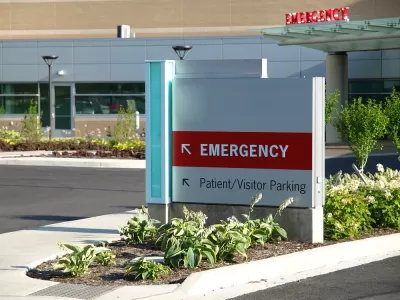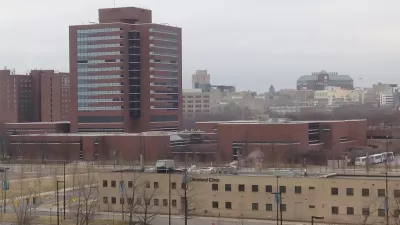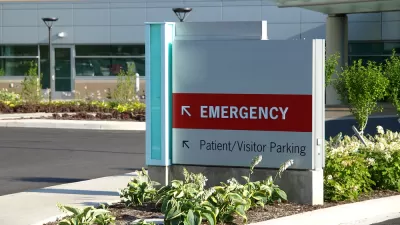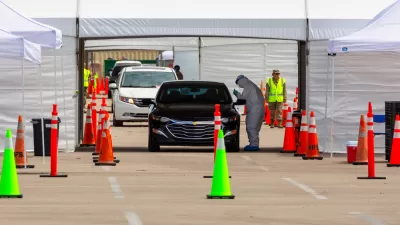Hospitals, medical research centers, and the like are supposed to represent health, but are often an unappealing and monolithic presence in the urban landscape. How can the form of health centers fall in line with their function?

There's been controversy about the responsibilities of hospitals and medical centers to their communities. But what about their physical form and how it impacts neighbors and patients alike?
Jennifer S. Vey says we need more discussion about "how the physical character of urban health centers, and the relationship they in turn have with their surrounding neighborhoods, could be more supportive of expanded and evolving ideas for what it takes to build a healthier society."
As things stand, most medical buildings aren't models of urban connectivity. Instead they embody a "starkly similar, and fairly depressing, spatial form: large-scale, inwardly focused buildings, ample parking, and scarcely any people in site."
Vey writes that hospital and research campuses are usually self-contained, blocking out community interaction, isolating patients and staff, even preventing medical progress by segregating doctors according to specialty and role.
A greener (as in literal plants) and more connected medical campus could address these failings by building on the study of healthy cities. Vey gives some promising examples of such medical "innovation hubs" and ends with a figure: $97.1 billion. That's the value of all large healthcare buildings planned or under construction in the United States at the end of 2015.
FULL STORY: Urban health centers: tear down this wall

Study: Maui’s Plan to Convert Vacation Rentals to Long-Term Housing Could Cause Nearly $1 Billion Economic Loss
The plan would reduce visitor accommodation by 25,% resulting in 1,900 jobs lost.

Alabama: Trump Terminates Settlements for Black Communities Harmed By Raw Sewage
Trump deemed the landmark civil rights agreement “illegal DEI and environmental justice policy.”

Why Should We Subsidize Public Transportation?
Many public transit agencies face financial stress due to rising costs, declining fare revenue, and declining subsidies. Transit advocates must provide a strong business case for increasing public transit funding.

Paris Bike Boom Leads to Steep Drop in Air Pollution
The French city’s air quality has improved dramatically in the past 20 years, coinciding with a growth in cycling.

Why Housing Costs More to Build in California Than in Texas
Hard costs like labor and materials combined with ‘soft’ costs such as permitting make building in the San Francisco Bay Area almost three times as costly as in Texas cities.

San Diego County Sees a Rise in Urban Coyotes
San Diego County experiences a rise in urban coyotes, as sightings become prevalent throughout its urban neighbourhoods and surrounding areas.
Urban Design for Planners 1: Software Tools
This six-course series explores essential urban design concepts using open source software and equips planners with the tools they need to participate fully in the urban design process.
Planning for Universal Design
Learn the tools for implementing Universal Design in planning regulations.
Smith Gee Studio
Alamo Area Metropolitan Planning Organization
City of Santa Clarita
Institute for Housing and Urban Development Studies (IHS)
City of Grandview
Harvard GSD Executive Education
Toledo-Lucas County Plan Commissions
Salt Lake City
NYU Wagner Graduate School of Public Service





























